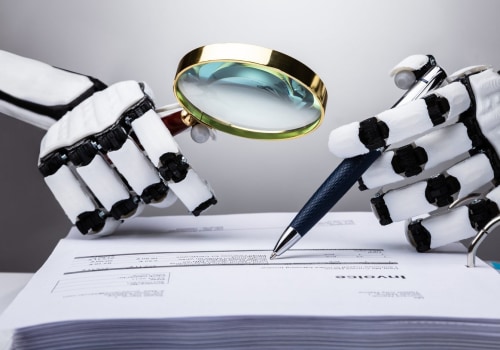The AI allows you to set up automatic responses to customer requests, that is, instant responses whenever possible. The most complicated problems are introduced into the inbox of the corresponding support agent, who is able to provide solutions and assistance faster than ever. AI helps you optimize your internal workflows and, in return, maximize your interactions with customer service. An AI-powered customer service chatbot can help you retain your customers by answering their inquiries immediately or helping them find what they need.
These chatbots can make the customer experience much smoother. Advances in AI continue to pave the way for increasing efficiency across the organization, especially in customer service. Chatbots are still at the forefront of this change, but other technologies, such as machine learning and interactive voice response systems, create a new paradigm of what customers (and customer service agents) can expect. Not every technology is right for every organization, but AI will be critical to the future of customer service.
Here are 10 examples of the future of AI in customer service. One of the most common uses of AI in customer service is chatbots. Companies are already using chatbots of varying complexity to manage routine issues, such as delivery dates, balance due, order status or any other issue arising from internal systems. By turning these FAQs into a chatbot, the customer service team can help more people and create a better overall experience, while reducing operating costs for the company.
In essence, machine learning is key to processing and analyzing large streams of data and determining what actionable information is there. In customer service, machine learning can help agents use predictive analytics to identify common questions and answers. Technology can even detect things that an agent may have missed in communication. In addition, machine learning can be used to help chatbots and other artificial intelligence tools adapt to a given situation based on previous results and, ultimately, help customers solve problems through self-service.
When the COVID-19 pandemic forced employees to occupy remote positions, many training teams began using AI to create simulations that tested employees' ability to manage various situations. Previously, training consisted of a combination of in-person training, self-paced learning and a final evaluation, a routine that is much more difficult to implement in remote or hybrid offices. With AI assuming the role of the customer, new agents can test dozens of possible scenarios and practice their responses with their natural counterparts to ensure that they are prepared to resolve any problem a user or customer may have. By combining object detection and artificial intelligence, your customers can provide a photo of a product they like and have your artificial intelligence program search for similar products in your catalog. It facilitates customer interaction with intuitive tools and accessible suggestions, reducing pressure on agents who receive a higher volume of requests and customers who face more complex challenges.
As AI advances, self-service functions will become more and more widespread, offering customers the opportunity to answer their questions on their schedules. AI can improve customer experiences when implemented effectively, as it reduces wait times, personalizes experiences, and gives them more resources to resolve problems without having to contact an agent. However, the compulsively antisocial part of my psyche that makes me not want to make phone calls also appreciates this shift toward using AI in customer service. If all of your chat representatives are busy handling cases, the AI can tell the customer to use live chat for a faster response.
The artificial intelligence system is programmed to respond to customer inquiries and requests, and can simulate a human conversation by processing natural language. The use of sentiment analysis to analyze and identify how a customer is feeling is becoming commonplace in today's customer service teams. One of the most effective ways companies use AI is to make their service teams more agile, especially when dealing with large volumes of customer requests. AI is also frequently used to do things like predict wait times, synthesize resolution data, and personalize unique customer experiences.
Often, implementing AI for customer service enables a personalized shopping experience. Artificial intelligence tools make it possible to analyze the customer's problem, the perceived urgency and the associated emotions. Technologies such as chatbots and sentiment analysis can help your support team optimize their workflow, respond to customer requests more quickly, and proactively anticipate customer needs. If you're a business owner and you're always looking for new and innovative ways to grow your business, look no further: AI customer service is the solution.











